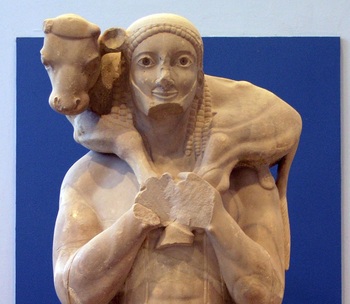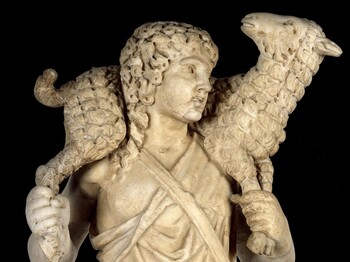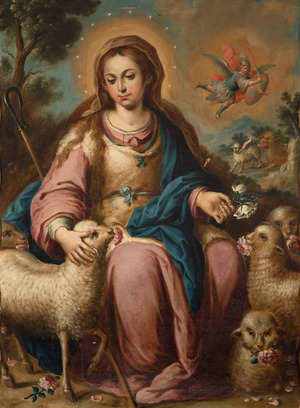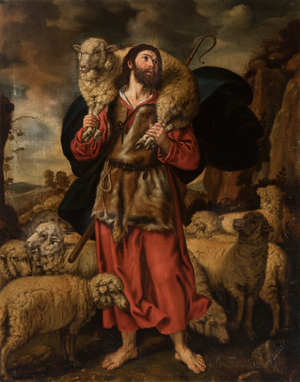The good shepherd. One of the oldest iconographies in the West
The image of a shepherd tending his flock is perhaps one of the oldest images of humanity and at the same time a permanent source of artistic inspiration, whether in poetry, as in the bucolic themes of Theocritus or Virgil, or in the religious themes of ancient Greece and Rome with Hermes and Mercury. The tradition of the classical past left its mark even on Judaism and early Christianity to the point that one of the first images of Jesus was as the good shepherd.

The bearers of rams or calves, known in Greece as criophores or moscophores, would probably be among the earliest examples of this iconography, we would have to go back more than two thousand five hundred years ago. These images used to be associated with the protector deity of medicine and commerce, Hermes. We can even find festivities in which young people carried on their shoulders some cattle as a reminiscence of their patron saint. The representations with these motifs would come to us through sculptures, some of them being masterpieces of the Archaic period.

Rome kept alive the Greek influences in its own culture and from these, the early Christians their sources for the new art. Christianity is based on the principles of Judaism and already in the Old Testament we find references to God as the shepherd who takes care of his flock (the people of Israel). The example is therefore defining since the shepherd would reflect the way in which we are guided by a superior figure. The comparison would be perfectly understandable for a people like the Hebrew since a good part of their history has a nomadic character along with their livestock. In the same way, the profession, as ancient and perennial as humanity itself, embraces many of the values with which God wanted to be identified and therefore the example to be followed by the faithful. Throughout the Gospels there are a good number of references to the good shepherd, whether in parables or in the more everyday discourses of Jesus.
On the artistic level, the iconography has not changed for millennia, the Greek kuros carrying a ram on their shoulders would remain the same as in early Christian art, as is the case of the manifestations in the Roman catacombs or the exceptional sculpture of the third century in the Vatican Museums. The good Christian shepherd holds a lamb in a clear allusion to other biblical passages related to salvation.
The Spanish Baroque was able to continue with this idea and adapt it to national tastes and counter-reformist dictates. A perfect example is the piece that will be auctioned on November 9th. The scene has an idyllic character with a landscape that envelops and frames everything, however, the figure of Christ in the center, as well as his solemn attitude raising his gaze to heaven indicates the mystical character of this theme. Not only is it an image loaded with beauty and tenderness, but it supports some of the most important tenets of Christianity. The main figures of Spanish painting in the seventeenth century gave outstanding examples of this composition in their works, including Juan van der Hamen or Nicolas García Salmerón in which we clearly see parallels with our work.

A curious detail of the evolution of this theme is the adaptation of this iconography to the Virgin Mary, The Divine Shepherdess. An invocation born at the beginning of the XVIII century in our country. Undoubtedly, the best artist to define these representations is Alonso Miguel de Tovar, whose work was recently auctioned by Setdart.






